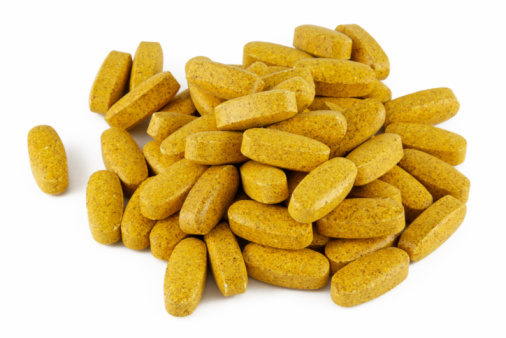
Some of the most essential elements to our bodies’ natural chemistry are minerals. Eating the right amount of minerals through diet alone can be difficult, so it’s key to understand how and why supplementation can help.
The Dirt Poor Facts
Soil depletion is the leading cause of mineral deficiency in the fruits and vegetables we consume. In fact, you would have to eat eight oranges grown today to receive the same amount of vitamin A our grandparents received from one (1).
Why? According to a 2004 study conducted by Donald Davis and a team of researchers from the University of Texas at Austin’s Department of Chemistry and Biochemistry, produce’s mineral depletion is caused by a myriad of agricultural practices that improve every aspect of crops except for nutrition (1).
“Efforts to breed new varieties of crops that provide greater yield, pest resistance and climate adaptability have allowed crops to grow bigger and more rapidly,” said Davis, “but their ability to manufacture or uptake nutrients has not kept pace with their rapid growth” (1).
The team studied Department of Agriculture nutrition data from 1950 and 1999 for 43 different vegetables and fruits. They discovered declines in calcium, protein, phosphorus, iron, riboflavin (vitamin B2) and vitamin C levels over those 50 years (1).
Despite these startling statistics, however, Davis advises shoppers not to stop their consumption of nutrient-heavy crops. “Vegetables are extraordinarily rich in nutrients and beneficial phytochemicals,” he said. “They are still there, and vegetables and fruits are our best sources for these” (1).
Mineral (Im)Balance
In the aforementioned study, Davis noted that soil depletion led to a magnesium deficiency (1). In fact, most Americans don’t get enough magnesium, rendering their calcium consumption less effective. It has been widely reported that calcium benefits bone health, but without the help of magnesium, calcium cannot reach its full potential as a mineral (2). In many ways, magnesium and calcium are a dynamic duo, supporting many aspects of health together. Take osteoporosis, for example. This bone-loss disease is prevalent among men and women over the age of 40 (2). Doctors often recommend calcium and vitamin D to counteract the effects of bone loss; however, new scholarship suggests magnesium is just as essential for bone health (2). Without the presence of magnesium, too much calcium has the potential to build up in our arteries and lead to heart issues (2).
This side effect, however, should not prevent you from consuming calcium. Just make sure that you are also taking the recommended amount of magnesium: one part to two parts calcium (2). Everybody is different, and if you are deficient in calcium or magnesium, it is best to consult the expertise of a doctor in order to calculate the perfect amount of both minerals for your body.
The combination of calcium and magnesium is not the only mineral couple of which to be aware. Sodium and potassium have a similar partnership. Their most important function is creating what is known as the sodium–potassium pump. The minerals come together in our cellular membranes to create a pump that generates a gradient, or slope, of ions (3). This pump continuously filters sodium ions out of the cell while allowing potassium to enter. Once the gradient is created, it assists in many functions, including the transmission of nervous system signals (3).
Many diets are high in sodium but deficient in potassium. Excessive levels of sodium can lead to cardiovascular events such as a heart attack or stroke (4). Indeed, women who consumed 50% more sodium than potassium had a 46% higher risk of dying from one of those cardiovascular problems. In turn, those with a low sodium to potassium ratio had less of a chance of dying from cardiovascular problems (4).
Without a Trace
Calcium, magnesium, potassium and sodium sit atop the mineral hierarchy. They belong to an elite group known as major minerals. The body requires at least 100 mg/day of each major mineral to maintain optimal health (5). Trace minerals, on the other hand, are needed in small doses (less than 100 mg/day) (5). The most important of these minerals are iron, iodine, copper, manganese, chromium, selenium and zinc. Iodine helps to regulate the thyroid while manganese and selenium work as antioxidants and assist vitamin E. Copper helps the absorption of iron (necessary for carrying oxygen through the blood) and chromium supports healthy blood sugar levels (5). Zinc supports the immune system and benefits protein production. There are many more trace minerals that must be consumed in order to maintain a healthy body. It’s easy to forget about them in the context of major minerals, but they are just as important.
Minerals are an essential part of our daily diets, but unfortunately, thanks to some questionable farm practices, our food now contains less of them. The best way to receive all the necessary nutrients that you may be missing is to take supplements. Before starting a new regimen, consult a nutritionist or your primary care provider. WF
References
1. “Dirt Poor: Have Fruits and Vegetables Become Less Nutritious?” Sci. Amer., Apr. 27, 2011, www.scientificamerican.com/article.cfm?id=soil-depletion-and-nutrition-loss, accessed Apr. 4, 2013.
2. B. Walton, “Calcium vs. Magnesium: The Key Is Balance,” Mar. 2004, www.pccnaturalmarkets.com/sc/0403/sc0403-expertadv.html, accessed Apr. 4, 2013.
3. D. Goodsell, “Sodium-Potassium Pump,” Oct. 2009, Protein Data Bank, www.pdb.org/pdb/101/motm.do?momID=118, accessed Apr. 4, 2013.
4. J.U. Adams, “In with Potassium, Out with Sodium,” Los Angeles Times, July 24, 2011, http://articles.latimes.com/2011/jul/24/health/la-he-salt-potassium-heart-20110724, accessed Apr. 4, 2013.
5. S. Busch, “Trace Versus Major Minerals,” http://facweb.northseattle.edu/
sbusch/Lecture_13.pdf, accessed Apr. 4, 2013.
Published in WholeFoods Magazine, July 2013










